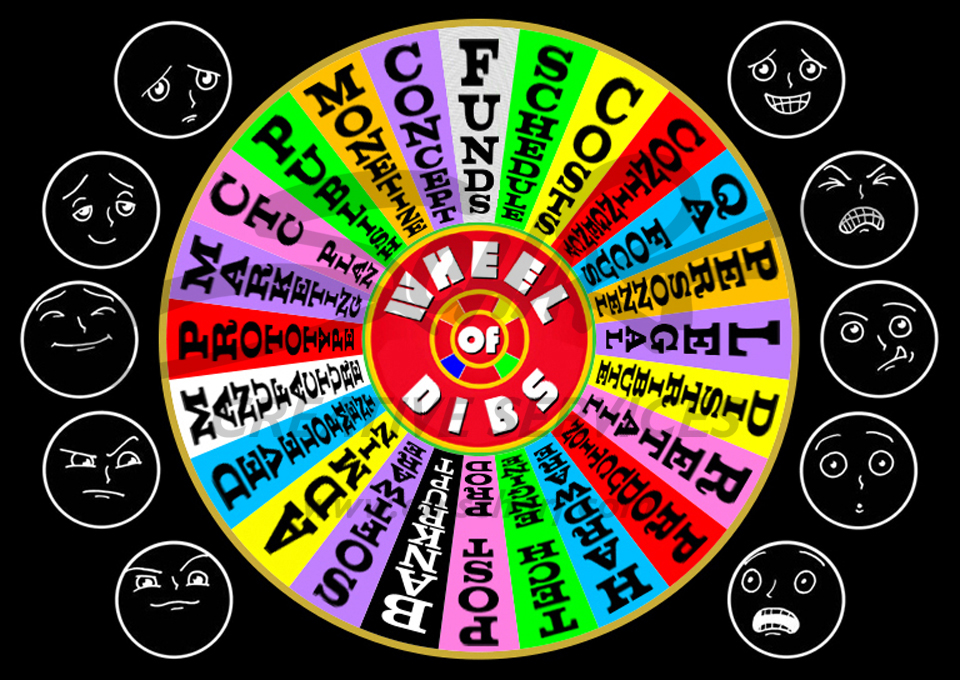|
|
|
|
|
|
|
|
| Home | History | Blogs | Portfolio | FAQ | Contact | Terms Of Use |
|
|
|
|
|
|
|
|
| < 2011 > |
|
|
| JAN | FEB | MAR | APR | MAY | JUN | JUL | AUG | SEP | OCT | NOV | DEC |
|
|
I have been involved with the software
and technology industries since 1991. I am a creative management
consultant specializing in concept-to-completion (CTC) solutions and
recovery plans for product development companies of all types and
sizes.
DIBS is an acronym of my own creation
with a greater meaning and purpose towards the execution of a potent
end-to-end business concept not fully explored these days.
Dibs, the word, typically refers to a commonly used slang word for claiming
something like exclaiming Shotgun! when you want to sit in the
passengers side front seat of a car.
If you want to regularly claim the sweet rewards of a successful business and still be able to take bite-sized risks someone has to have DIBS on your company.
DIBS is applicable to the development and maintenance of any
business or product in support of that business.
These moooo-ving parts comprising DIBS go well beyond winging it through business meetings on catch phrases and coffee:
- Market Research Anyone with a seemingly worthy product concept and a desire to turn that concept into the basis for a future business is obligated to perform in-depth market research on that concept . . . before presenting it to a potential funding source.
Your market research should focus on the discovery of existing products which may be identical, similar, or loosely-related in look, feel, feature set, and function. Further analysis should focus on the consumer trends that helped give those existing products life, market share timelines, monetization efforts, and overall success rates for both domestic and international variants.
There is yet another layer of market study the "dark side" of your research that is painfully necessary to round out and protect your efforts going forward.
Consider the sheer volume of people who participate in the global economy and that a good idea can come from anyone. Consider that for every successful product there may be 10 to 100 failed concepts. Consider that many of those failed concepts were still copyrighted, patented, trademarked domestically and internationally and hidden in underground bunkers before white flags were finally waved. Consider that market research is an absolute must for all product concepts in order to find out:
1 if your brilliant idea already belongs to another entity (one or more people or a consortium of companies).
2 if that entity intends to allow copyrights, patents, and trademarks to expire due to a lack of resources.
3 if that entity would relinquish claims against "your" product concept in exchange for a reasonable pre-profit buyout.
4 if that entity would relinquish claims against "your" product concept in exchange for a possibly larger post-profit percentage.
5 if that entity simply wishes to collaborate with you on "unfinished business" and will accept a reasonable business partnership.
6 if that entity and devoted descendants are going to continue renewing copyrights, patents, and trademarks until the end of time.
Once you have performed reasonable and sometimes ridiculous market research to make sure your product concept is yours alone, you can confidently move forward with presenting a high-level product concept summary to your prospective financier(s), with research at the ready for surprise requests.
- High-Level Product Concepts This is the standard, nice, clean, and neat 2-page summary of what you hope to achieve with your product concept. Some but not all financiers wish to cut to the chase and see the important results of your market research prospectus side by side with your concept.
You will be fortunate to end up collaborating with a financier who appreciates a strong product concept and understands the frailty of market projections and consumer trends for certain product categories.
You will be fortunate if your future funder is experienced and patient enough to appreciate that product concept potential does not always result in the built-in market share and sales of "basic daily needs" (e.g. water, clothing, fresh food and produce, electricity, medications, and fuel).
You will be fortunate if you can wrangle a regal resource who understands not all product concepts can maintain or grow the market share of similar pre-exiting products . . . and that the development of an entirely new market niche may be necessary.
- Legal Counsel Anyone running an above-board business needs to have an attorney available for consultation on any decision you make on copyrights, trademarks, global recognition of invention patents, handling of import tariffs, and other big ticket items that could compromise and ruin your business at every stage of its existence. Your general counsel initially or in due course may recommend / introduce additional legal support deemed necessary for their specialization towards these tasks and the global regions in which they may take place.
- Detailed Product Concept Mock-Ups This is the standard, pre-prototype, low-level presentation of your product concept usually delivered in digital and print media formats which should satiate those financier(s) with an appetite for greater detail.
- Product Development Plans These plans are at the core of your CTC your Design Doc, Tech Spec, Art Bible, Audio Almanac, QA Plan, Deployment Plan, and Update Plan.
- Proofs Of Concept This is a semi-functioning prototype (hardware and / or software) that gives all interested parties a true taste of what is possible with your product concept. This task is normally funded, developed, and constructed through your own personal efforts . . . unless you, too, have a family member (with low expectations) who is delighted to divest themselves of discretionary dollars.
- Prototype Funding A semi-functioning proof of concept can be enough to convince your potential financiers to fund a fully-functional prototype, but you are still playing a game of chance. You should always steel yourself for completing a full prototype on your own dime even if you see a blinding glimmer of hope ricochet off the diamond-studded money clip of your interested investor.
- Functional Prototypes You are going to have to demonstrate your prototype sooner than later, regardless of any pre-production funding making its way into your project's pay pot.
Most people in and out of business view a prototype as physical hardware and a "vertical slice" as software. Businesses have historically and traditionally attempted a Minimum Functionality for Maximum Funding (MFMF) approach daring to display the lowest possible amount of functionality in order to gain the highest possible amount of funding from their financiers.
Logic dictates, for some, that a fully-functional prototype or vertical slice will deliver the greatest amount of long-term benefit to all parties involved. Logic fails, for others, who find the MFMF shortcut too tantalizing and potentially damaging to the future of their businesses when faced with a function-focused financier.
Many but not all software developers have long followed a more extreme MFMF approach with an IOU (Investor is Overpromised and Underserved) where functionality is overpromised with the hope of negotiating with a financier to accept a less functional but still promising result. Confucius say: "Keep vertical slice at arms length but away from wrists."
You may wish to beware the dare that would encourage your financier to become miffed at your MFMF. Your business may be through if your efforts result in an IOU. You may simply want to deliver the very best prototype you can reasonably build leaving less to chance and lassoing as large an allowance as possible.
- Prototype And Product QA You are going to require at least a 3-stage QA solution during this entire process assuming you hit a home run (or a triple) with your new funding source(s). The first round of QA can be performed by you and any partners who teamed with you on the construction of the prototype. The second round of QA will involve public focus groups where a select group of every day people from your target audience will be invited to play test what will then be a full production version of your prototype (with far more bells and whistles and nearly ready for comprehensive battering by a professional QA team).
Feedback from the focus groups will help you determine which features delivered to spec, which features came close but deserve more time, and which features should be wish-listed or saved for any follow-up product. The third round of QA is the professional group that will mercilessly pound on your product where any defects will be subject to immediate deresolution . . . or your product will suffer from termination. You could certainly perform your own pre-release QA testing, but the creator does tend to become colorblind to the created from time to time. Post-release QA can be a nightmare if you attempt to go it alone depending upon the size of your customer base.
- Production Plan This is a high-level description of every component and sub-component involved in what would be your full production effort representing all possible disciplines, as well.
- Production Plan Task Lists This is a low-level description of every individual task that makes up every component and sub-component of what would be your completed A-Z production effort. These task lists are as much for your "not born yesterday" financier(s) as they are for you and your future production team. You will not catch everything, but you will be pleased you made the effort when a question does arise that requires a legitimate-if-mildly-incomplete answer.
|



